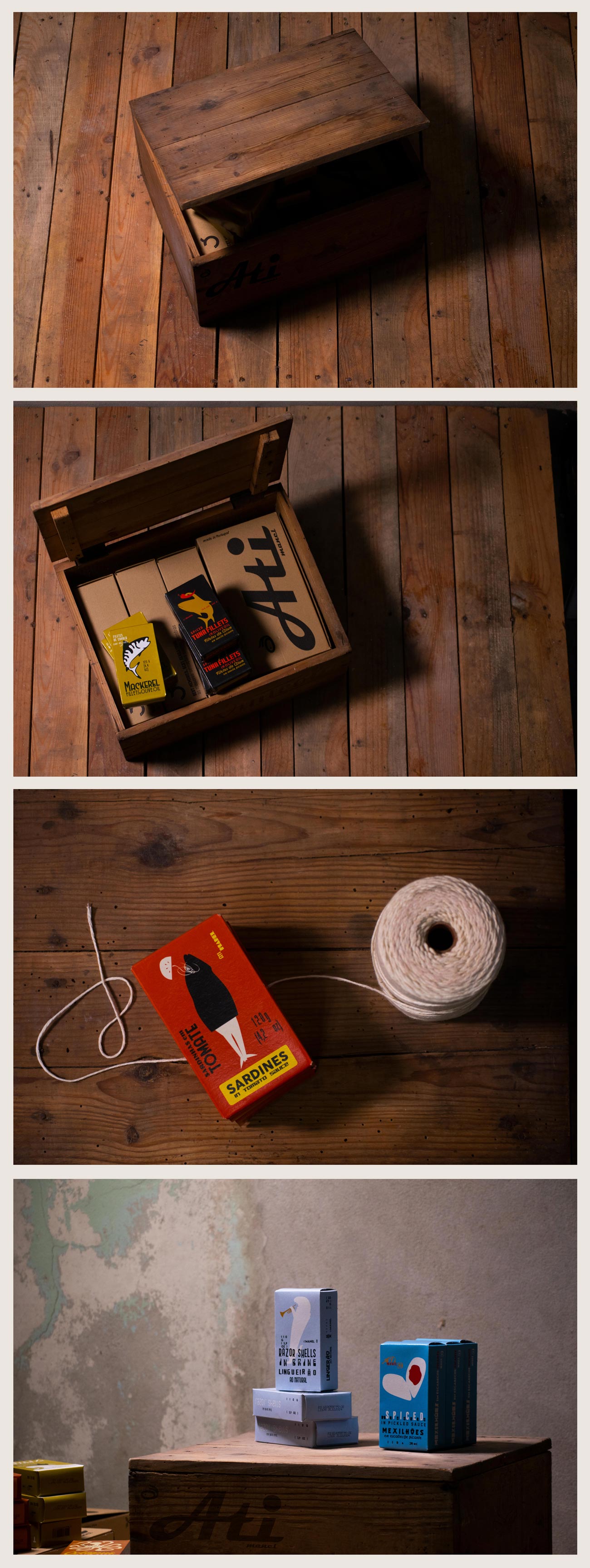
I was often told about my great-grandfather, Ati Manel. That he was like this, that he was like that, that he did this, that he did that. He had a canning business, which he had started with difficulty but with a lot of energy. The First World War brought fever to the Portuguese canning industry. In the mid-twenties, national factories were around four hundred. In the late thirties they were reduced to less than half. When World War II broke out, demand for cans increased again. And Ati Manel had no hands to measure. Sometimes he sent small packages to friends he had abroad. It seems that they arrived at the destination as if they were the best gift in the world at that time. And they were. Fortunately, they are still today for other reasons. My great-grandfather's health was already, at that time, arm wrestling with his willpower. But he still witnessed the prosperity of the fifties.
I never got to know Ati Manel, nor his canned fish. The things that remained of him in the house of Reveles were there winning the dust of the time. When we did the sharing, we walked in the house exchanging childhood stories between brothers. We looked at the trapdoor that overlooked the basement. And, among books and other office stuff, we found a number of things related to the production and marketing of canned food. Stamps, zinco engravings, some silkscreen frames, photolithography, wood types, sharp, one or another color proof, a thread count, clichés, lithographic stones, offset plates, label boxes, stamps, a notebook with formulas and recipes of conservation, another with notes from the market abroad, yet another, with contacts from agents, producers and fishermen with personal notes, letters received from various countries with comments on preserves.
I only had eyes for these relics. As a designer, I was entrusted with this heritage. I put everything together, cleaned, organized, tidied, feeling the appeal of an identity marked by the signs of a golden age. I recovered the alphabets and the palettes. I remade plots, networks, stitches. I adapted the graphic strategies to the new requirements, to the specificities and standards of the markets in different countries and continents. I renewed and updated the solutions, maintaining the spirit and visual environments of my great-grandfather's time.
But all of this would only make sense with another commitment, with special attention to his notes, his care and connection to the producers, his demands with the raw material, his relationship with the suppliers, with the auctions, with the fishermen - culminating in his formulas and recipes, thinking about how to recover and maintain the authenticity of old times, by taking advantage of the best current production conditions: seeking to combine the know how of the freshness of the picas, the razor clams or the scallops preservation, realizing the way in which the best oil for sardines was chosen, the care with which tuna fillets, marinated mussels, squid filling, garlic sauce for octopus was prepared. The table is set again: accept our invitation to join in the celebration of Ati Manel Cans.







